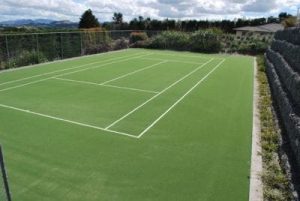Youth Sports and Synthetic Courts
As youth sports continue to grow in popularity, the demand for safe, versatile, and durable playing surfaces increases. Synthetic courts have emerged as a preferred choice for many sports organizations, schools, and community centers. This article explores the benefits of synthetic courts for youth sports, their design considerations, and how they contribute to a safer and more engaging environment for young athletes.
1. The Rise of Youth Sports
In recent years, youth sports participation has surged, with millions of children engaging in organized sports across the globe. This growth can be attributed to various factors:
- Health and Fitness: Increasing awareness of the importance of physical activity for children’s health.
- Social Interaction: Opportunities for kids to make friends and develop teamwork skills.
- Skill Development: Structured environments allow young athletes to learn and improve their skills.
The Role of Facilities
To accommodate the growing interest in youth sports, quality facilities are essential. Synthetic courts offer a range of advantages, making them an ideal choice for various sports such as basketball, tennis, soccer, and multi-sport activities.
2. Benefits of Synthetic Courts for Youth Sports
Synthetic courts provide numerous benefits for young athletes, making them a popular choice among sports organizations and schools.
Durability and Longevity
One of the most significant advantages of synthetic courts is their durability. Unlike natural grass or clay surfaces, synthetic materials can withstand heavy use without significant wear and tear. This durability translates into:
- Lower Maintenance Costs: Synthetic courts require less frequent repairs and maintenance compared to traditional surfaces.
- Consistent Playability: They provide a stable and uniform playing surface, ensuring fair play for all athletes.
Safety Features
Safety is paramount when it comes to youth sports. Synthetic courts are designed with safety in mind, offering:
- Shock Absorption: Many synthetic surfaces include cushioning materials that help absorb impact, reducing the risk of injuries.
- Non-Slip Surfaces: Properly designed synthetic courts provide excellent traction, minimizing slips and falls.
Weather Resistance
Synthetic courts are less affected by weather conditions compared to natural surfaces. This characteristic allows for:
- Year-Round Use: Synthetic courts can be used in various weather conditions, providing opportunities for year-round training and competition.
- Minimal Disruption: Rain or extreme temperatures have less impact on playability, ensuring that games and practices can proceed as scheduled.
3. Designing Synthetic Courts for Youth Sports
When designing synthetic courts for youth sports, several factors should be considered to optimize performance and safety.
Surface Material Selection
Choosing the right synthetic surface material is crucial for performance. Common options include:
- Acrylic: Ideal for multi-sport facilities, providing a smooth and consistent surface.
- Rubber: Often used for indoor courts, offering excellent shock absorption and durability.
- Polyurethane: A versatile option that can be customized for various sports.
Size and Layout Considerations
The size and layout of the court should be tailored to the specific sports being played. This includes:
- Dimensions: Ensuring that the court meets regulation sizes for the intended sports.
- Multi-Sport Layouts: Designing courts that can accommodate multiple sports to maximize facility usage.
Safety Features
Incorporating safety features into the design is essential. Considerations include:
- Shock Pads: Installing shock-absorbing pads under the synthetic surface to enhance player safety.
- Proper Drainage: Ensuring adequate drainage to prevent water pooling and maintain a safe playing environment.
4. Promoting Inclusivity in Youth Sports
Creating inclusive environments for youth sports is vital for fostering participation among all children, regardless of skill level or ability. Synthetic courts can play a significant role in this effort.
Accessibility
Synthetic courts can be designed with accessibility in mind, ensuring that all children can participate. This includes:
- Wheelchair-Friendly Designs: Creating courts that are easily accessible for children with disabilities.
- Varied Skill Levels: Designing multi-sport courts that cater to different skill levels, encouraging participation from everyone.
Community Engagement
Promoting youth sports through community engagement is essential. Synthetic courts can serve as focal points for local sports programs, encouraging:
- Organized Events: Hosting tournaments, camps, and clinics to attract youth participation.
- Partnerships: Collaborating with local schools, community organizations, and sports clubs to promote youth sports initiatives.
5. Conclusion
Synthetic courts offer numerous benefits for youth sports, providing safe, durable, and versatile playing surfaces. As youth sports continue to grow, investing in quality synthetic courts can enhance the athletic experience for young players while promoting inclusivity and community engagement. By prioritizing safety and performance in the design and maintenance of synthetic courts, we can create environments where young athletes can thrive and develop their skills for years to come. https://www.protensurfaces.com/construction-of-synthetic-sports-courts/


